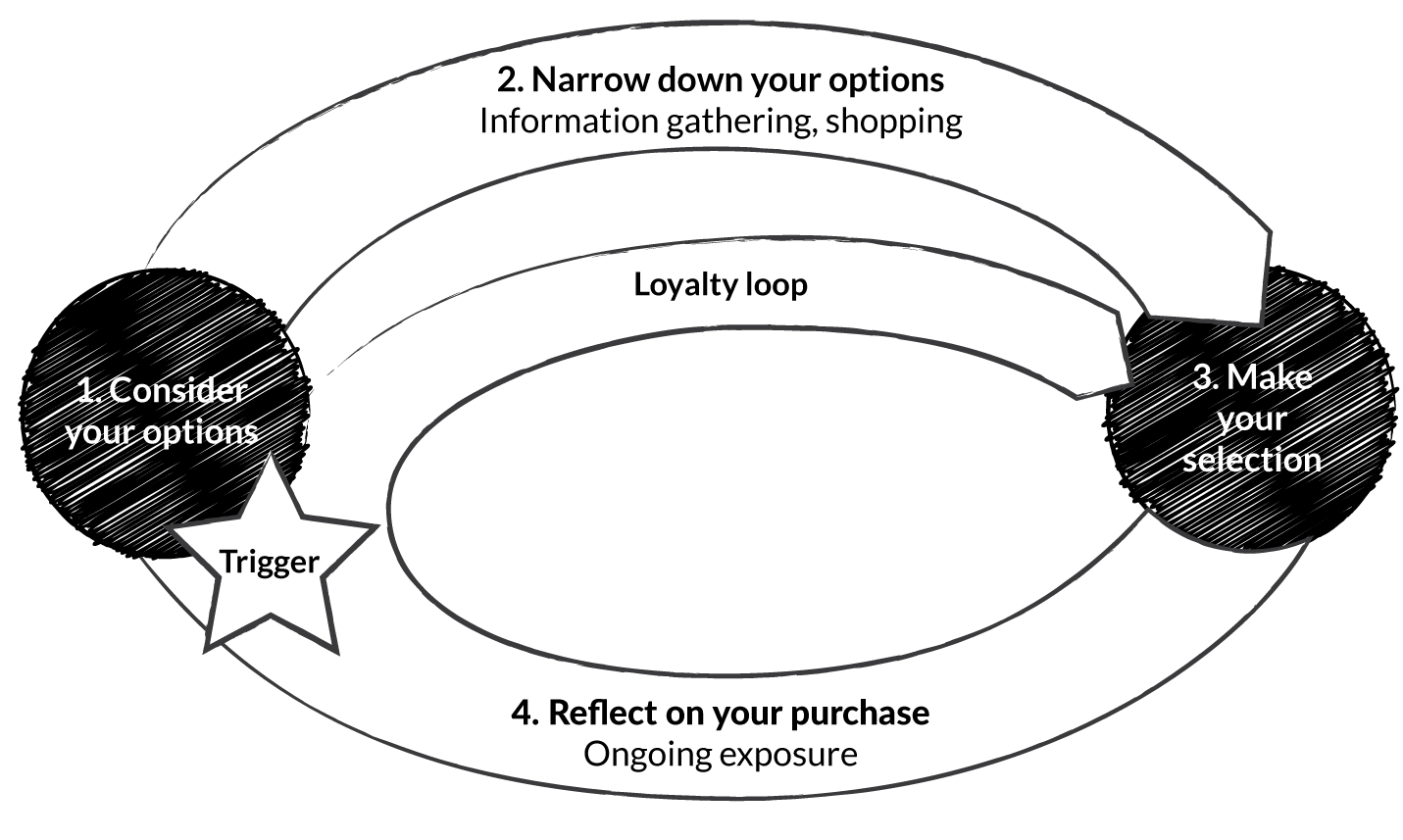
The principle of decision stages is that every purchase involves four similar stages. 1. One considers different products or services. 2. One assesses one’s options. 3. A selection is made. 4. One reflects on the purchase. Knowing that almost all purchases follow this decision process can enable you to optimize your school's marketing strategy to grow your enrolments and strengthen your brand.
What are the stages consumers take when making a purchase? Most go through the following four:
There’s some variation in this decision process, though. When buying a pack of gum, for instance, you may skip stages 1 and 2 or run through them in seconds. You may also skip stage 4.
Consider, though, a far more important decision—choosing a school. In this case, the buyer will normally go through a far more involved and exhaustive process. Since most parents take their children’s education very seriously, they’ll invest far more time in each stage, especially stage 2.

Source: David Court (Director, PSP Investment), Dave Elzinga (Partner, McKinsey Chicago), Susan Mulder (Board of Directors, The Kraft Heinz Company), and Ole Jørgen Vetvik (Senior Partner, McKinsey Bangkok)

Almost every purchase decision goes through four stages: 1. Consider one’s options, 2. Assess them, 3. Make a selection, and 4. Reflect on the process. And within each stage certain buyers will engage in certain activities: i.e., stage 1 → awareness and recognition, stage 2 → research and analysis, stage 3 → choose, and stage 4 → reflection.
It’s critical that you have a clear understanding of these stages and the activities buyers go through during each of them. You’ll also need to think abou how much time and effort your target market invests in each stage. Though all stages can be an important part of choosing a school, stage 2 seems especially vital. Most parents spend the bulk of their time considering and assessing their options (the active research stage), and this has the biggest impact on their final decision.
Sometimes school marketers forget this during their planning process, and this limits the potential for them to grow their school enrolment and strengthen their brand . For instance, they might spend too much time on stage 1, initial consideration (awareness and recognition) and not enough time on stage 2, assessing one’s options (the active research stage).
Sometimes school marketers forget this during their planning process, and this limits the potential for them to grow their school enrolment and strengthen their brand . For instance, they might spend too much time on stage 1, initial consideration (awareness and recognition) and not enough time on stage 2, assessing one’s options (the active research stage).
In short, just making a parent aware about you (stage 1) doesn’t imply they’ll select you (stage 3). And even if they’re already aware of you, they’ll almost certainly want to learn more about you before they make their decision. This means you’ll need to prioritize stage 2, assessing one’s options, by ensuring parents have enough and the right kinds of information to make their selection.
To learn more, read our article on how research effort positively correlates with the decision value of a purchase.
Webinar